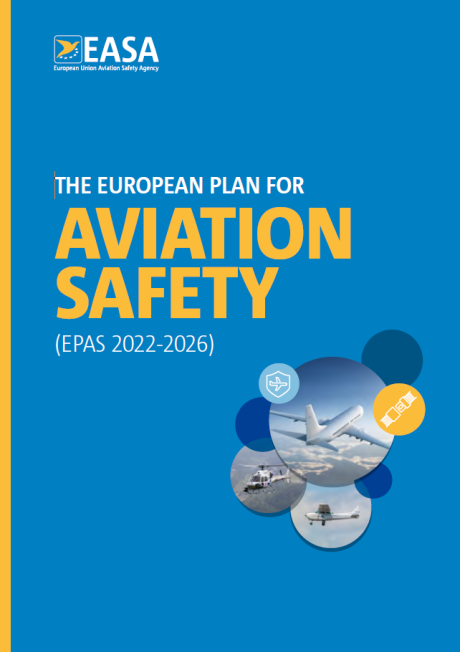
Highlights of this 11th edition of the European Plan for Aviation Safety (EPAS) are:
- Addressing the safety issues emerging from COVID-19, this edition supports the further modernisation of the aviation system, in the areas of safety, efficiency, level playing field and environmental protection.
- 19 new research projects (RES) are included with many of them addressing innovative technologies, such as remote flight instruction, risk assessment of complex systems, use of machine learning (ML) in certification, electric and hybrid propulsion, or digital transformation.
- A new rulemaking task is included, to create a European digital pilot licence system.
- In the drones (Unmanned Aircraft Systems) domain, several concepts, platform architectures and practical demonstrators continue to be developed at high pace across Europe. COVID-19 accelerated the development of certain use cases, such as for the delivery of vital supplies to medical personnel, humanitarian aid and emergency/disaster response. EPAS, in line with the European Commissions’ ‘Drone Strategy 2.0’, will continue to foster the development of a drone ecosystem in Europe.
- The strategic priority ‘Environmental protection’ is reinforced in this edition, on the basis of the Agency’s sustainable aviation programme. Initiatives include actions to increase CO2 efficiency, prepare for electric and hybrid propulsion technology, sustainable aviation fuels, carbon offsetting, as well as for the development of an environmental label.
- Volume III, first introduced with EPAS 2021-2025, provides the latest set of domain Safety Risk Portfolios with 219 individual safety issues described and prioritised. A dedicated COVID-19 portfolio as well as the newly established Safety Risk Portfolio for the rotorcraft domain are included.
Downloads
Get notified via email alerts
Stay informed when this page is updated, or when we publish new content like this. You can always unsubscribe or update these settings later on.